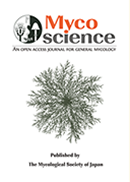Volume 53, Issue 2
Displaying 1-12 of 12 articles from this issue
- |<
- <
- 1
- >
- >|
Full paper
-
2012Volume 53Issue 2 Pages 85-91
Published: 2012
Released on J-STAGE: March 31, 2023
Download PDF (137K) -
2012Volume 53Issue 2 Pages 92-101
Published: 2012
Released on J-STAGE: March 31, 2023
Download PDF (717K) -
2012Volume 53Issue 2 Pages 102-112
Published: 2012
Released on J-STAGE: March 31, 2023
Download PDF (588K) -
2012Volume 53Issue 2 Pages 113-121
Published: 2012
Released on J-STAGE: March 31, 2023
Download PDF (203K) -
2012Volume 53Issue 2 Pages 122-132
Published: 2012
Released on J-STAGE: March 31, 2023
Download PDF (782K)
Short communication
-
2012Volume 53Issue 2 Pages 133-138
Published: 2012
Released on J-STAGE: March 31, 2023
Download PDF (168K) -
2012Volume 53Issue 2 Pages 139-143
Published: 2012
Released on J-STAGE: March 31, 2023
Download PDF (365K)
Note
-
2012Volume 53Issue 2 Pages 144-146
Published: 2012
Released on J-STAGE: March 31, 2023
Download PDF (140K) -
2012Volume 53Issue 2 Pages 147-151
Published: 2012
Released on J-STAGE: March 31, 2023
Download PDF (227K) -
2012Volume 53Issue 2 Pages 152-155
Published: 2012
Released on J-STAGE: March 31, 2023
Download PDF (104K) -
2012Volume 53Issue 2 Pages 156-160
Published: 2012
Released on J-STAGE: March 31, 2023
Download PDF (448K) -
2012Volume 53Issue 2 Pages 161-165
Published: 2012
Released on J-STAGE: March 31, 2023
Download PDF (84K)
- |<
- <
- 1
- >
- >|
